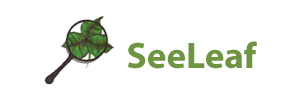Learn about Poison Ivy
Anyone cleaning out overgrown areas or even just weeding this spring should beware. Poison ivy (Toxicodendron radicans) may be growing among the plants you are handling. Gardeners and landscapers often come into contact with poison ivy and many contract a bothersome rash as a result. It pays to be able to identify this plant and avoid it.
Characteristic
Poison ivy can either be a low to the ground plant consisting of 3 leaves or a tall climbing vine that is leafless in winter (deciduous). As it climbs tree trunks, wood fences or other flat structures, the stem produces many small roots that cling to the surface. This is a good identifiable characteristic of the vine in case you can’t easily see the leaves. Plants are very common along fences, at the base of trees and seedlings are often found in garden beds.
Identifying Poison Ivy
Poison ivy has a characteristic compound leaf consisting of three leaflets (Hence the saying, “Leaves of three, let it be”). The leaves are 2 to 4 inches long and dull or glossy green with pointed tips. The middle leaflet is generally larger than the two laterals. The margins of the leaflets are variable, appearing irregularly toothed, lobed or smooth. The leaves are arranged alternately on the stems. Young foliage is often shiny or oily-looking with a reddish tint.
Mature poison ivy vines growing up trees flower and produce a white fruit which is readily eaten by birds. The birds spread the seeds through their droppings creating the wide occurrence of this plant. New seedlings of poison ivy are easily overlooked. They may have a reddish tint to their foliage and will appear upright. As they get older they will begin to vine and grow up nearby shrubs or trees. It is easy to come into contact with young poison ivy seedlings when weeding flower beds, so you need to be observant.
Virginia Creeper
Another common vine in our area, Virginia creeper (Parthenocissus quinquefolia), is a non-poisonous vine that is often mistaken for poison ivy. It has five leaflets radiating from one point of attachment on mature leaves, which distinguishes it from poison ivy which has three. The leaflets also have a different marginal appearance.
What makes poison ivy harmful
The agents in poison ivy responsible for causing the dermatitis are various catechols. They are found in every part of the plant including the leaves, stems, flowers and even pollen. They can survive burning, and if poison ivy is burned contact or breathing of the smoke would be dangerous for people who are allergic. A significant portion of people are allergic to these catechols, and sensitivity can change over time. Just because you were not allergic to poison ivy as a child does not mean you are not allergic as an adult.
What to do if you've come in contact with poison ivy
It is best to avoid poison ivy altogether, but if you do realize you have come into contact with it prompt washing may reduce the reaction. Wash with running water without using soap (soap can remove the natural oils protecting the skin and increase penetration of the catechols). There are special cleansers available at local drug stores that can be used (generally in the section with calamine lotion, a common treatment for poison ivy rashes), and you might want to keep these on hand if you have had problems in the past. Lotions are also available that, when applied to the skin beforehand, protect the individual from the catechols should contact occur.
Source: www.lsuagcenter.com
